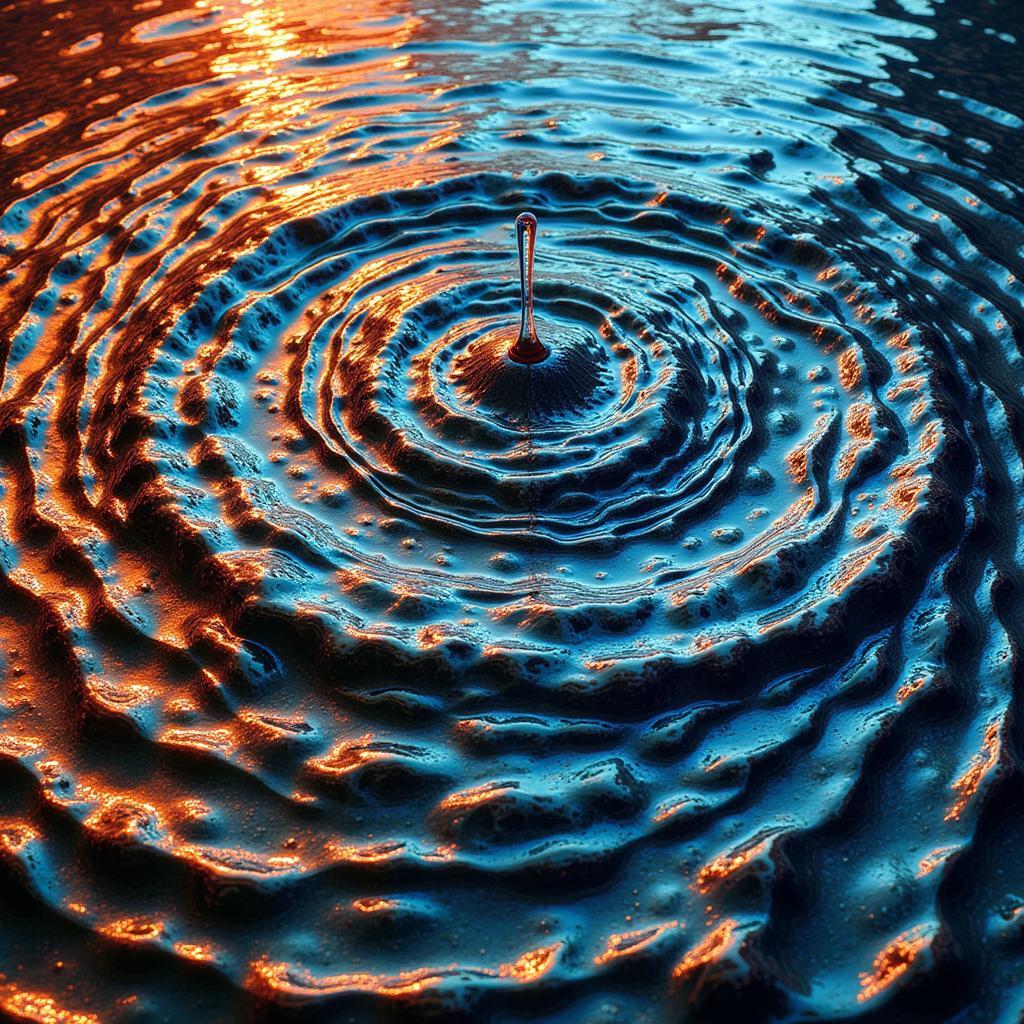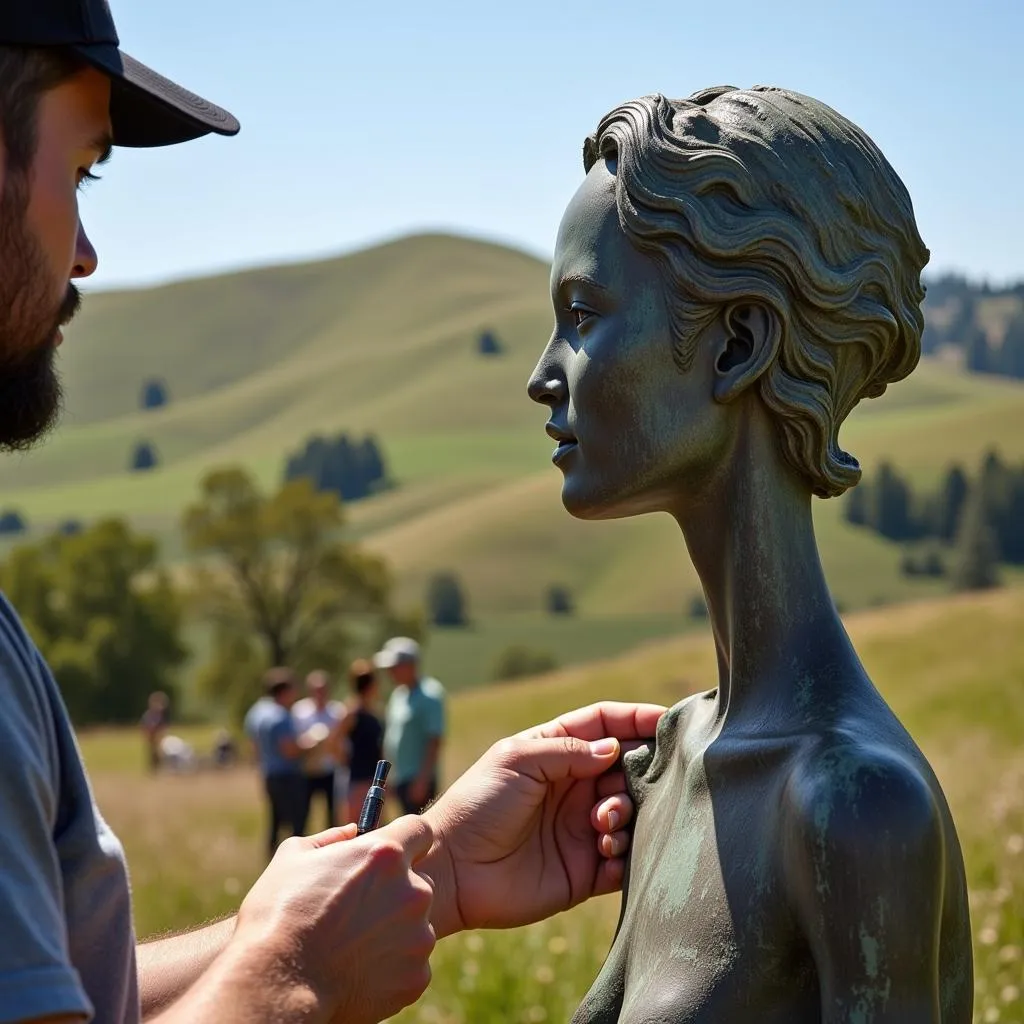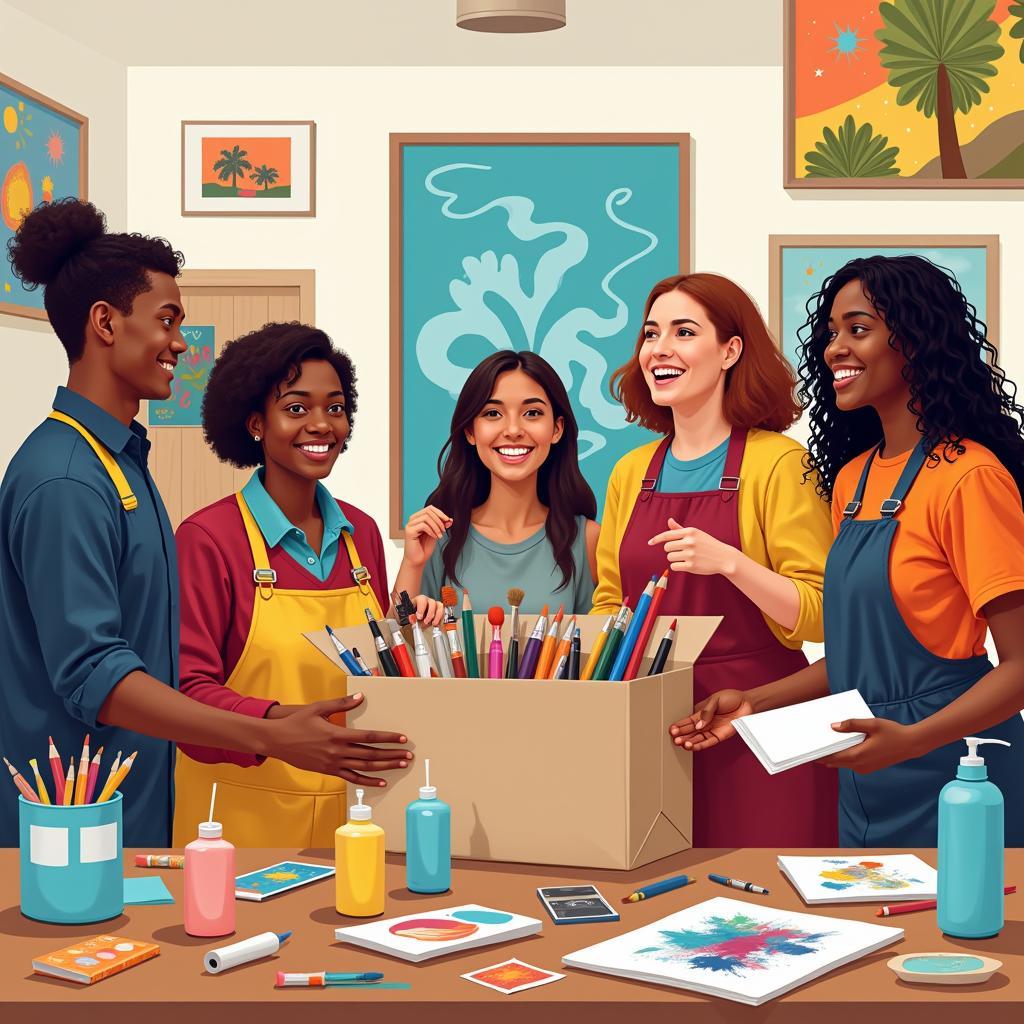Exploring the Mesmerizing World of Ripple Art
Ripple Art, a captivating digital art form, seamlessly blends technology and creativity to produce stunning visual experiences. This innovative technique uses algorithms to simulate the mesmerizing patterns created by ripples in water, light, or sound, transforming them into intricate works of art.
 Abstract Ripple Art Patterns
Abstract Ripple Art Patterns
The Allure of Algorithmic Art
What sets ripple art apart is its foundation in algorithms. Artists leverage code and mathematical formulas to manipulate digital elements, such as pixels, particles, or waves, mimicking the natural propagation of ripples. These algorithms act as the artist’s brushstrokes, dictating the flow, form, and interaction of the ripples, resulting in unique and often unpredictable compositions.
One of the most appealing aspects of ripple art is its ability to evoke a sense of tranquility and wonder. The rhythmic patterns and flowing movements often associated with water or sound waves can have a calming effect on the viewer, inviting contemplation and introspection.
Tools and Techniques: Shaping the Digital Canvas
Digital artists have a variety of software and tools at their disposal to create ripple art. Some popular choices include:
- Generative art platforms: Processing, openFrameworks, and TouchDesigner offer powerful environments for creating algorithmic art, including specialized tools for simulating ripple effects.
- Graphics editing software: Adobe Photoshop and Illustrator, while not specifically designed for generative art, provide a wide range of brushes, filters, and effects that can be used to create ripple-like patterns.
- Creative coding libraries: Libraries such as p5.js and D3.js simplify the process of coding interactive visuals for the web, allowing artists to create ripple art experiences accessible to a wider audience.
Beyond the Surface: Applications of Ripple Art
While visually captivating on its own, ripple art extends beyond purely aesthetic purposes. Its versatility lends itself to various applications, including:
- Digital illustration and graphic design: Ripple patterns can add depth, texture, and visual interest to illustrations, posters, website backgrounds, and other design elements.
- Animation and motion graphics: The dynamic nature of ripple art makes it ideal for creating captivating animations and motion graphics, adding a sense of fluidity and movement to digital content.
- Interactive installations and experiences: By integrating sensors and user input, artists can create interactive ripple art installations that respond to movement, touch, or sound, blurring the lines between art and audience participation.
The Future of Ripple Art: Expanding Horizons
As technology continues to evolve, so too will the possibilities of ripple art. We can expect to see artists pushing the boundaries of this digital medium, experimenting with:
- Virtual and augmented reality: Imagine stepping into immersive virtual worlds where ripple art surrounds you, responding to your every move.
- Artificial intelligence and machine learning: AI algorithms could be trained on vast datasets of ripple patterns, potentially leading to the creation of entirely new and unexpected artistic expressions.
The fusion of art and technology in ripple art not only produces visually stunning works but also opens up exciting avenues for creative exploration. As more artists embrace this innovative medium, we can anticipate a future where digital art continues to captivate and inspire, pushing the boundaries of human imagination.
FAQs About Ripple Art
1. What makes ripple art different from other digital art forms?
Ripple art distinguishes itself through its reliance on algorithms to simulate the natural behavior of ripples. This algorithmic foundation allows artists to create intricate patterns and captivating movements, resulting in unique and often unpredictable compositions.
2. What software is commonly used to create ripple art?
Artists utilize various tools, including generative art platforms like Processing, graphic design software like Adobe Photoshop, and creative coding libraries such as p5.js, to bring their ripple art visions to life.
3. Can ripple art be interactive?
Absolutely! By incorporating sensors and user input, artists can create interactive ripple art installations that respond to movement, touch, or sound, providing an immersive and engaging experience for the audience.
4. What are some future possibilities for ripple art?
The future of ripple art holds exciting prospects, with artists exploring its potential in virtual and augmented reality, as well as leveraging AI and machine learning to create entirely new artistic expressions.
5. Where can I find more examples of ripple art?
Online platforms dedicated to digital art, such as Metal Wave Art, showcase a diverse range of ripple art creations from artists worldwide.
Exploring Further: Related Artistic Concepts
- Generative Art: Delve deeper into the world of art created using algorithms, where chance and code intertwine to produce stunning visuals.
- Algorithmic Photography: Discover how photographers are using algorithms to manipulate and enhance images, creating captivating visual narratives.
- Data Visualization Art: Explore the intersection of data and art, where complex datasets are transformed into visually compelling and thought-provoking pieces.
Need Help with Your Artistic Journey?
At Online Art workshops, we believe everyone has a creative spark waiting to be ignited. Contact us at 02462573573, email us at [email protected], or visit us at Savico Megamall, 7-9 Đ. Nguyễn Văn Linh, Gia Thụy, Long Biên, Hà Nội 10000, Việt Nam. Our dedicated team is available 24/7 to provide guidance and support on your artistic endeavors. Let us help you unlock your creative potential and embark on a journey of artistic discovery.

